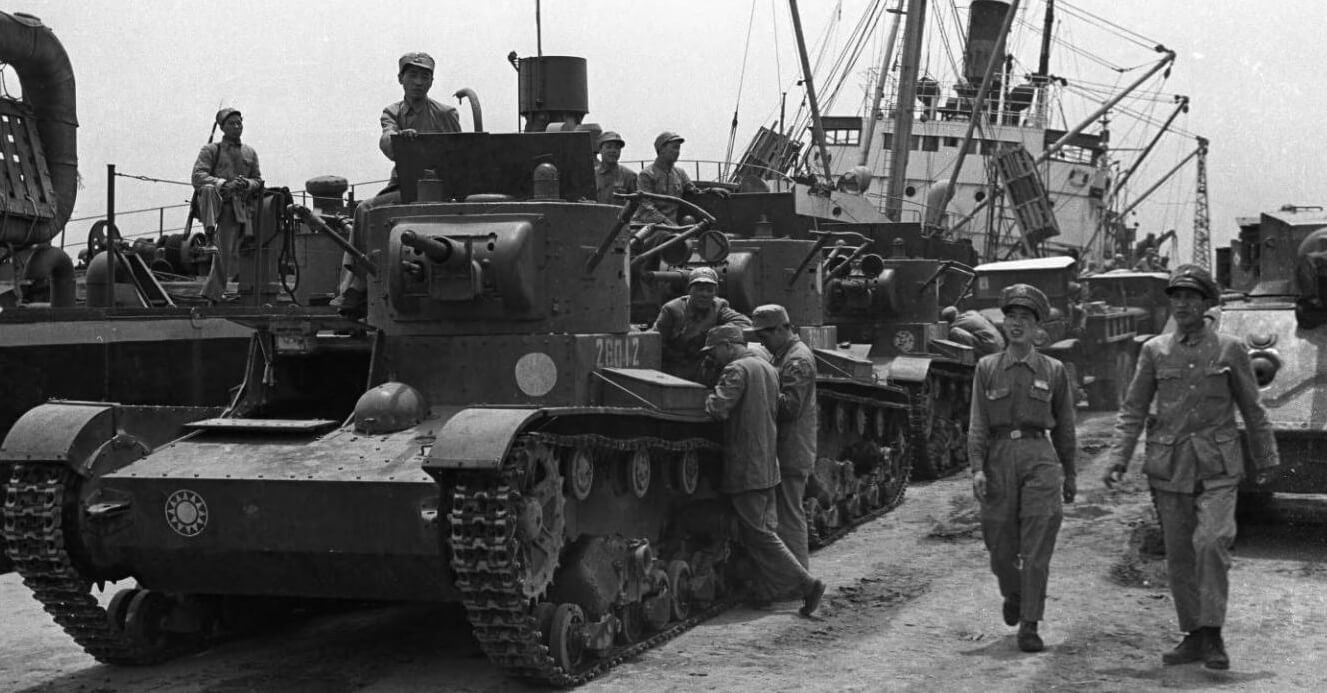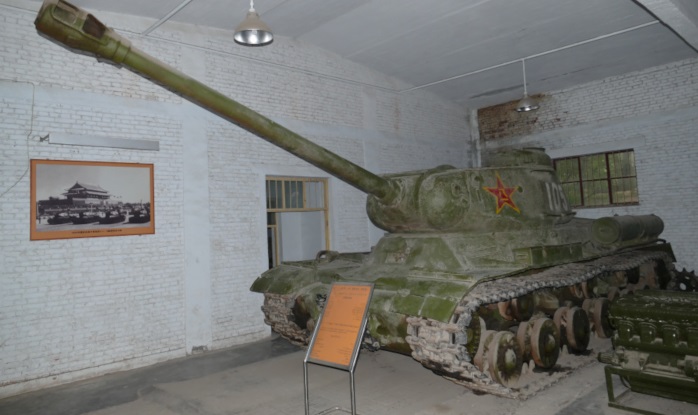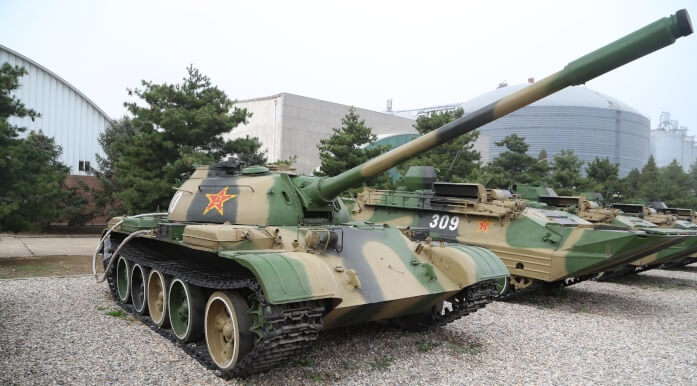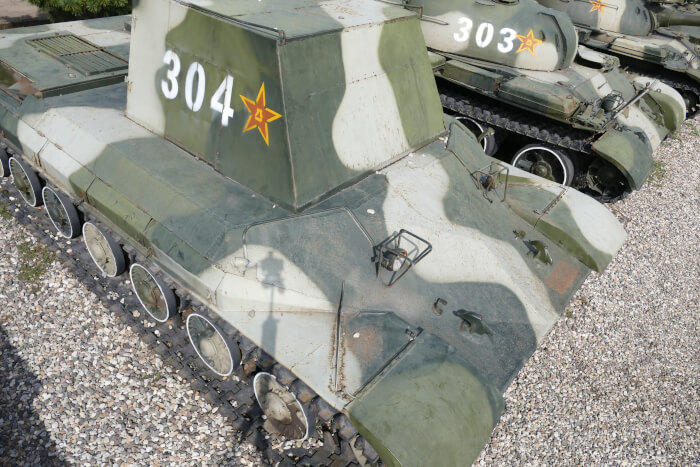Commanders!
Since our latest Top of the Tree event is dedicated to the heavy and yet mobile WZ-111 Model 5A, we thought a little spotlight on the Chinese tanks, and specifically their relationship with the Soviet vehicles, would be a nice addition to July. Dive into the secrets of the Celestial Empire's machines right now!
The First Chinese Tanks
The first appearance of tanks in China dates back to the 1920s. At the time, the central government controlled only a few provinces in the south, and most of the country was still a collection of feudal states, defended by military groups. One of these provinces' warlord was Zhang Zuolin, who managed to buy tanks for his troops. It was more like smuggling, since the 36 Renault FT tanks he got from France were first intended to fight during the Soviet revolutions. They were taken from Vladivostok in 1919 and eventually ended up in Manchuria.

Renault FT tanks during WW1
The vehicles were then passed to the Chinese People's Revolutionary Army, reinforced by UK Carden-Loyd tankettes. The begining of a fleet for sure, but not big enough to prevent Japan from seizing Manchuria in the 1930s. After the attack on Shanghai, the Japanese, impressed by the fierce defense of their opponent, decided to get more tanks, including home-made Type 89 and Renault NC-27 - a race for the best tanks had just started.
Looking for an Ally
The collision with Japanese tanks forced the Republic of China to accelerate the mechanisation of its army. In order to achieve this, the country purchased tanks from the UK, France, the U.S.A., and even Germany. But these new tanks did not play a significant role in the Sino-Japanese war, due to the lack of training of their commanders. As a result, by the end of 1937, the Chinese tank fleet was reduced to 48 units. Even worse, due to the alliance between Japan and the Third Reich, the Sino-German military cooperation was doomed to fail. China was in desperate need of an ally.

The Chinese army receives T-26 tanks
This is when the Soviet Union finally came into the picture. Going above and beyond the simple "moral support" offered by the West, the non-aggression treaty between the Republic of China and the Soviet government became the legal basis for sending weapons and military advisers to the Celestial Empire. The country received 87 T-26 tanks (from 1933) and a sensible number of armoured cars. But the alliance didn't stop with the machines: famous officers went to China to train local tank crews, and the industrial expertise of the Soviet Union was also put to good use.
A Series of Twists
But despite the established relationships and the good results of the T-26 tanks on the field, the Soviet Union was slowly pushed out of China by the Soviet-Japanese Neutrality Pact. Already at odds with the Third Reich, the Soviets couldn't risk a war on two fronts. By the summer of 1941, they got out of the deal, quicky replaced by the Americans, who provided some M3A1 Scout Cars to China through the Lend-Lease Act.

An IS-2 with Chinese markings
The Celestial Empire had a new ally, until war broke on its own territory. Civil war blew up in China, and eventually, the Soviet Union knocked back on the door, supporting the communist leadership. From the proclamation of the People's Republic of China to 1956, the country received about 1800 T-34 and T-34-85, 60 IS-2, as well as SU-100 and other personnel carriers. Manned by Chinese volunteers, these were the vehicles that Americans fought against during the Korean War.
Crazy Production
We're now deep into the 1950s, when China had worked on various projects, inspired if not entirely copied from the Soviet most popular designs, like the T-34-85, which became the Type 58 locally. Chinese engineers also tried to copy the Soviet T-54, before the Union simply handed over the technical documentation of this machine to its ally. The T-54 became the proper ancestor of all Chinese tanks, and the Soviet Union spared no expense when it came to exporting it: samples, specialists, plans, and more were sent to China to help the country build a proper fleet, and it worked.

The Type 59
In 1959, the parade of Beijing, which celebrated the 10th Anniversary of the People's Republic of China, 32 tanks were already present. The plan was to produce 1,000 vehicles a year, but the pace was slowed down after the deterioration of the relations between the two countries. That said, by 1967, the local type T-54, which received the name of Type 59, was already produced at 600 units a year. In the end, no less than 6,000 vehicles came out of the Chinese factories until the mid-1990s.
The Adaptations
If most of the equipment and the guns were directly borrowed from the Soviet designs, the Chinese vehicles weren't pure copies. China had to think about its environment and how some provinces could evolve into dangerous battlefields. Hence the development of the Type 62, also known as WZ-131, a lighter version of the Type 59, able to cross small bridges, typical of the southern provinces.

A prototype of the WZ-111
Eventually, these are the vehicles China would favour against the heavy tanks like the WZ-111, whose development started in 1950. Made to endure, the pike-nosed mastodon was equipped with a Chinese gun, allowing for separate loading shots with armour-piercing, high-explosive or cumulative shells. But by the end of 1964, the design of the WZ-111 was somewhat obsolete. The age of heavy tanks was almost over, and the results brought by the vehicle were not satisfying enough. In the end, the Type 59 had more potential, and a lot of room for improvement and modernization, which turned out both useful for the Chinese army and quite profitable for the Chinese Government's exportations.
Roll out!
